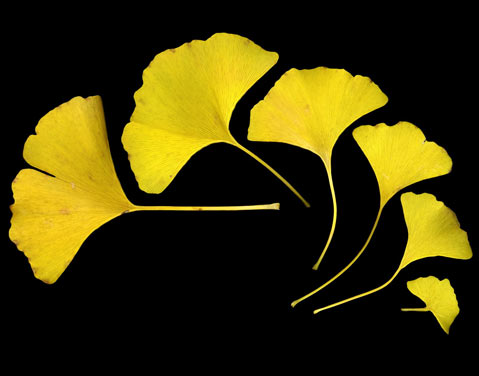The Saffron Duvet
Life Lessons Learned from a New Bedspread Cover

After far more weeks of searching, discussion, and contemplation than one would think such a decision required, I placed an online order for a new duvet. It was yellow-gold — “saffron,” in fact — with a bold pattern of fan-shaped ginkgo leaves etched in a darker shade of brick-red-orange. Does it sound weird? As I said, it was bold.
The ginkgo biloba leaf is formed in such a way that one cannot tell if it is one leaf divided into two or two leaves joined as a single one. In 1815, no less a celebrity than Goethe wrote a poem about this theme of unity in duality and sent it to his friend and former lover Marianne von Willemer with two leaves pasted on the page. I didn’t know about this when I ordered the duvet.
Nor did I know that ginkgo has been used for thousands of years as an aphrodisiac and to combat dementia, which makes it an even more intriguing choice for a bedcover pattern. I just thought it was pretty. Mostly I liked the color, which I was sure would add warmth and light to the room, make a bright statement, even counteract depression. The deciding factor: It was on sale.
I placed the order and embarked upon the anticipation phase: tracking the progress of the package, looking hopefully into the mailbox every day, and imagining the beautiful duvet stuffed with our old comforter, its shortcomings thus concealed, and splashed like sunshine across the bed.
Finally, it arrived. It was folded tightly within plastic and cardboard with an anal perfection I knew I could never replicate, but I figured it was a keeper and no repacking would be necessary. I unrolled and unfolded, yards of radiance, a slightly glossy sheen, unabashedly yellow-gold, flung gaily, one might even say defiantly, with those leaves. Ah, such a luxurious and extravagant thing!
Our comforter went in easily. Too easily. The duvet was huge. Capacious. One might even say baggy. Baggy and billowy biloba. Was it one duvet that should have been divided into two or two duvets joined as one? In any case, it was just too much of a good thing. Excess material hung emptily on every side.
We wondered if the fault was in our sad old comforter, its feathers long ago smashed into flatness, its generic white fabric spotted here and there with stains of unknown origin, one of them looking suspiciously like bicycle grease. We considered the possibility of buying a new, larger comforter that would fit snugly into the new duvet. We checked sizes and prices.
Wait a minute. Was I shopping again, buying something larger to replace something perfectly serviceable in order to have a new thing that would fit into something too-big? It didn’t seem healthy.
We pulled our old comforter out of its bounteous duvet housing, folded the yards of glossy saffron cotton around the cardboard that had come in the package, rolled, rubbed out wrinkles, hid and tucked edges, and squeezed the thing in all its glory back into its plastic casing. I have 30 days to return it, postage on my dime.
Sometimes it takes a small diversion to appreciate the fullness of what we already have. Our desires so often exceed our needs, and we live in a culture that promotes acquisition so constantly that the impulse to upgrade seems normal.
I stepped back and looked at the bed and the room … comforter concealed by a deep-red Matelassé-textured quilt, fading in places as red does, but perfectly fine, and I saw how the sunlight pours in through every window, how the walls are gold-hued in the morning, how that bold saffron duvet would have seemed an imposter, with its Technicolor yellow in a place that isn’t dark and its mute implication of wants unfilled in quite satisfactory lives.
Outside, the hills are turning summer-gold already.



